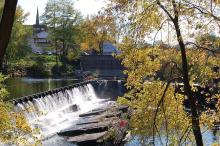Better Connectivity Sooner Than Expected in Chicopee
Chicopee, Massachusetts, is on its way to better connectivity through a publicly owned network after all. Chicopee Electric Light (CEL) has announced that the municipal utility plans to develop a pilot program yet this year to experiment with business connectivity. If all goes well, they have a long-term vision to also serve residents.
Remember That Resolution You Introduced?
Last week, we reported that at a recent meeting, City Councilor Joel McAuliffe had presented a resolution seeking support for a municipal network. Rather than pass it, however, the council referred the resolution on to the Utilities Committee for further review. McAuliffe created an online petition to show his colleagues on the council that their constituents supported a publicly owned network.
According to local outlet The Reminder, as the issue of municipal connectivity became a hot topic, CEL decided it was time to release news of their plan to launch a pilot project.
CEL General Manager Jeff Cady said, “We’re a municipal utility and operate in the best interest of our stakeholders, the rate payers. We’re going to operate our Internet service in the same way. We’re going to start slowly, providing service to a handful of businesses to iron out any issues.”
Cady went on to tell The Reminder that, even though the feasibility study was a few years old, the data was still valid and CEL are close to finalizing their plans.
CEL has already decided on a name for the service: Crossroads Fiber. The network will be deployed in phases, with businesses closest to existing fiber assets scheduled to be the first for connection. Approximately 70 percent of businesses in Chicopee are already near the community’s existing fiber and some are already receiving service through an agreement between CEL and Holyoke Gas & Electric. Once the initial pilot project is completed and CEL has had a chance to discover and resolve any issues, they anticipate expanding the pilot area in 2019.
Residents Won't Have to Wait Too Long



